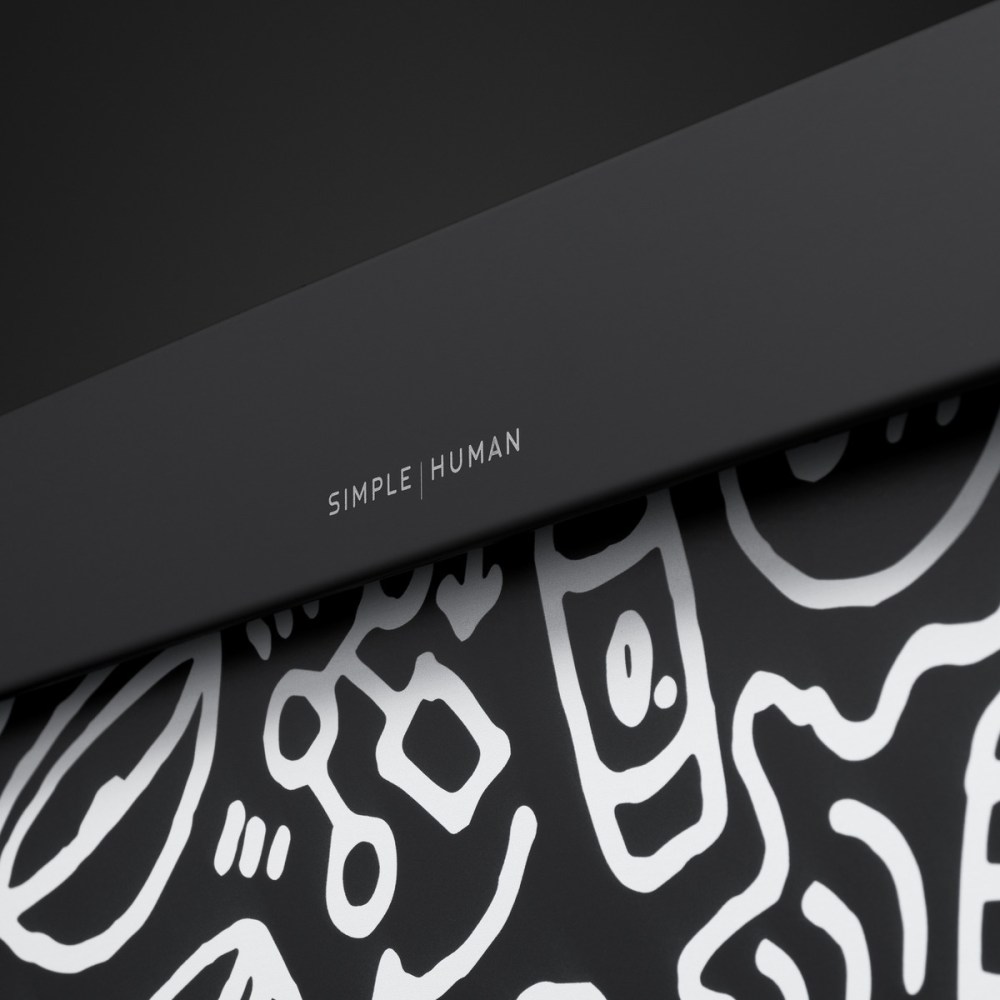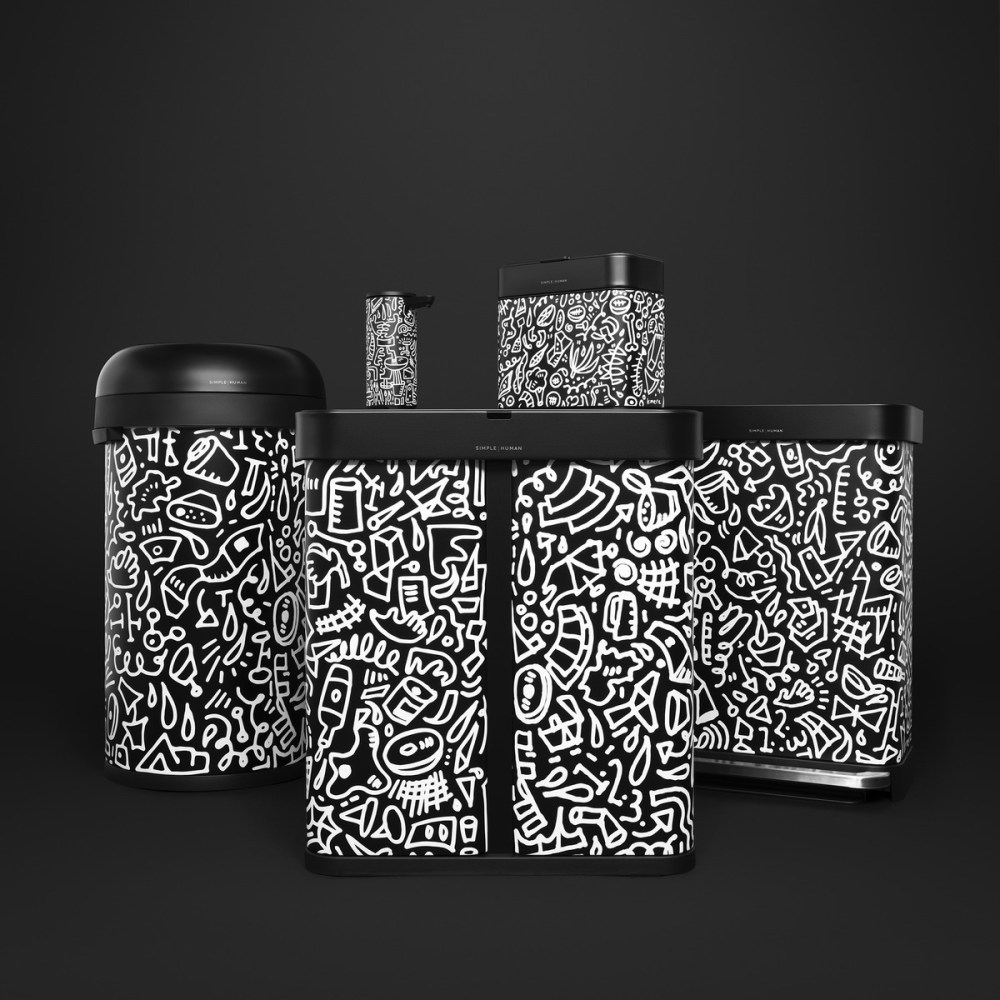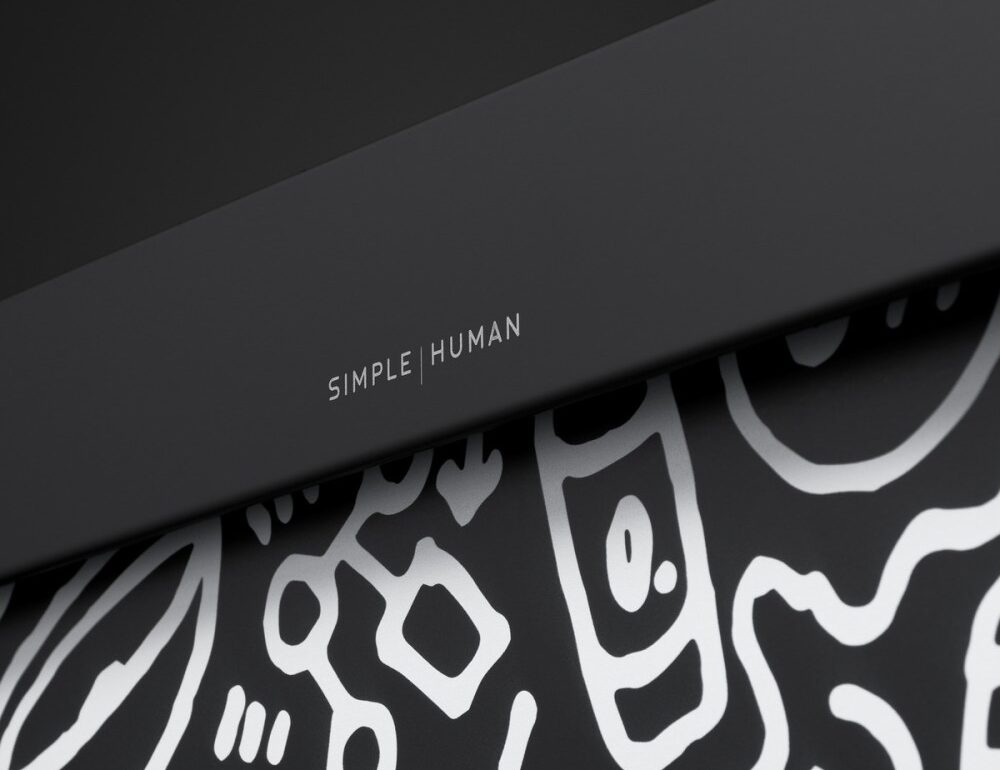Simplehuman, a brand best known for its minimal, high-function home products, has taken a creative detour. In its first-ever Artist Edition collaboration, the company has teamed up with Brooklyn-based muralist Katie Merz to reinterpret five of its most recognizable items through a bold, hand-drawn lens.
Merz, who is renowned for large-scale murals that feel part-glyph, part-storyboard, brings a playful weight to the collection. Her signature black-and-white linework, referencing architecture, urban signage, and spontaneous mark-making, wraps around Simplehuman staples like their sensor bins and soap dispensers. The limited capsule collection transforms these utilitarian tools into conversation pieces; objects that don’t just blend in, but ask to be noticed.
Per Simplehuman’s website, the collection blends “The best of both coasts — California design meets the art of New York.”

Collaborating with an artist like [Katie] Merz, whose work is rich with symbols and visual storytelling, marks a subtle but significant expansion of the brand’s design language.
What’s compelling here isn’t just the aesthetic shift, but the philosophical one. Simplehuman has long championed precision engineering and a restrained modernism. Collaborating with an artist like Merz, whose work is rich with symbols and visual storytelling, marks a subtle but significant expansion of the brand’s design language. In a space where “form follows function” has often meant stripping away visual complexity, this collection poses a new question: why not both?
Over the past decade, more brands have invited artists into their product development processes — not merely as surface decorators, but as collaborators who reframe how we relate to the objects around us. While many of these partnerships lean into the hype economy of luxury drops or limited runs, the Simplehuman x Katie Merz collection feels more exploratory than commercial.
Merz didn’t merely decorate the products; she responded to them. Her linework doesn’t mask their function, it interacts with it, draws attention to it, and adds a personal layer of meaning. “Partnering with Simplehuman allowed me to bring my visual language into a new, everyday context,” says Merz. “Each product became a starting point, with its shape, purpose, and movement guiding the drawings. These designs are kinetic blueprints, turning functional objects into storytelling surfaces.”
There’s an immediacy to her drawings, as if they were sketched directly onto the surfaces in a burst of intuitive energy. That looseness stands in welcome contrast to Simplehuman’s otherwise tightly controlled, systems-driven design aesthetic.
Each product became a starting point, with its shape, purpose, and movement guiding the drawings. These designs are kinetic blueprints, turning functional objects into storytelling surfaces.
Katie Merz, artist
This collaboration also reflects a larger trend in branding: artist partnerships as cultural strategy. In an era where authenticity and visual narrative matter more than ever, brands are increasingly turning to artists to humanize their products and engage audiences in new ways. From IKEA’s collaborations with street artists to Gucci’s work with contemporary illustrators, what once felt niche now signals relevance.
What makes this partnership stand out is how quietly it challenges assumptions, especially those about what design is “supposed” to look like in a domestic context. It’s not about ornamentation for its own sake; it’s about rethinking our relationship with the tools we use every day. A soap dispenser doesn’t need to tell a story — but what happens when it does?
That kind of thinking opens the door to new creative possibilities. And for a brand like Simplehuman, whose innovations have typically been hidden in sensors, hinges, and touchless features, it raises a bigger question: can design solve problems and still spark joy?
Whether this collection resonates with longtime fans remains to be seen. But it offers a clear reminder: even the most functional objects can become a canvas.
For the branding world, it signals a quiet evolution; from products that disappear into the background to those that become part of our visual and emotional lives. And for Simplehuman, often dubbed the “Apple of home goods,” it’s a confident first step into the expressive, unpredictable terrain of art-meets-everyday.
As Merz herself might say, every line tells a story. And in this new chapter, Simplehuman suggests that even the most routine rituals, taking out the trash, washing your hands, can be moments of subtle delight.
A soap dispenser doesn’t need to tell a story — but what happens when it does?

This post was originally published on this site be sure to check out more of their content






